By Joe Berk
Harley-Davidson built four military motorcycles during World War II: The WLA, the WLC, the Knucklehead EL Overhead Valve, and the XA. The 45-cubic inch V-twin WLA was the preferred US Army motorcycle, and it was the motorcycle Harley-Davidson produced in mass quantities. We recently visited the Harley-Davidson Museum in Milwaukee, where I was able to grab most of the photos you see here.
The WLA
The WLA Harley-Davidson (if you haven’t tumbled to it yet, the “A” in WLA stands for Army) used a detuned 750cc air-cooled engine. The motorcycle had a springer front end and a solid rear (there were no springs or shocks in the rear, other than the spring beneath the seat post). The WLA, like other Harleys of that era, had a foot-operated clutch on the left and a hand shifter on the fuel tank’s left side.
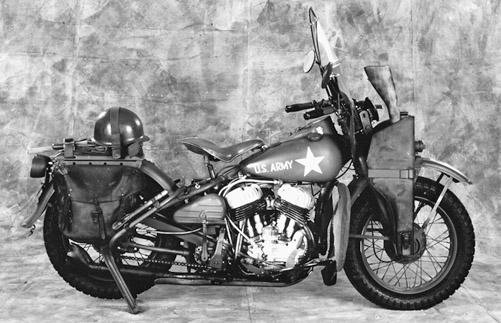
Simplicity was the WLA’s defining theme. Its flathead engine could be disassembled using only hand tools. At the army’s request, Harley built the WLA with a carburetor that had nonadjustable needles and jets, a configuration Harley used on some of its police motorcycles. The idea was to prevent soldiers (or police officers) adjusting the carb. The WLA didn’t even have a key. A trooper just had to kick-start it and ride.
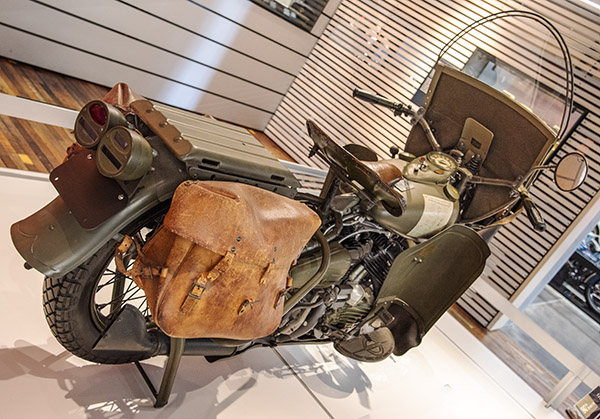
The Army quickly found WLA improvement opportunities. Travel on dusty roads tended to accelerate engine wear, so Harley added a monstrous oil-bath air filter. The second improvement was the headlight location. WLA headlights were initially above the handlebars (like on the civilian models). Part of the Army’s tactical doctrine, though, included a move that required the rider to use the motorcycle as a shield. The drill in that move involved skidding the rear wheel, flipping the rear out, and then laying the bike down to form a barricade…you know, so you could shoot at the bad guys from your now-prone motorcycle (thus giving new meaning to the time worn “I had to lay ‘er down” and similar expressions). The problem here was that the above-the-handlebars-headlights often broke during this maneuver. Harley remounted the headlight just above the front fender to better protect it.
The Army started buying WLA Harleys even before the United States went to war. In 1940, the Army ordered 16,000 WLAs to be delivered in 1940 and 1941, and then after Pearl Harbor, the pace increased. Harley won contracts for 13,000 WLAs in 1942, 24,000 in 1943, 11,000 in 1944, and more than 8,000 in 1945.
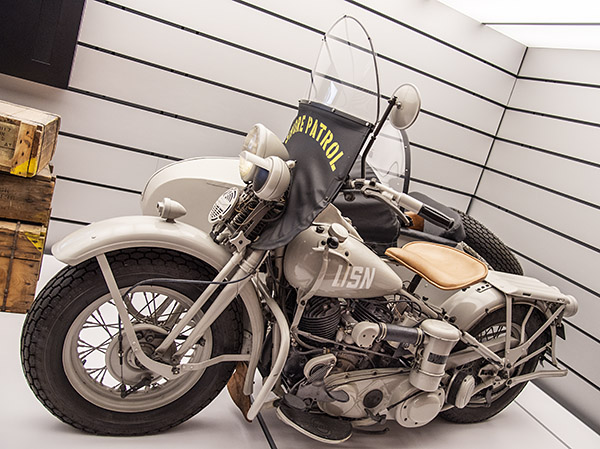
Even the Navy got in the act with a WL variant painted sort of a battleship gray. The Navy used their motorcycles for shore patrol duties (the Shore Patrol was the Navy’s Military Police function). I saw one with a sidecar at the Harley Museum in Milwaukee. It was a sweet-looking motorcycle.
Harley-Davidson sold 88,000 military motorcycles during the war to the United States, England, Canada, China, India, and Russia. Many were eventually sold to the public. Most are in collections; some are still ridden today. In addition to the 88,000 complete motorcycles, Harley built enough spare parts to build 30,000 more motorcycles.
The WLC
During World War II, the Canadians also bought Harleys for their army, as did many other countries. The other countries used the standard WLA, but Canada had its own unique requirements. These included an auxiliary hand clutch, interchangeable front and rear wheels, and a front wheel stand (the U.S. model had the traditional Harley side stand). Harley-Davidson built 18,000 WLC motorcycles for Canada.
The 61 EL
Harley had introduced its 61-cubic-inch EL Knucklehead engine to the civilian market in 1936. The Knucklehead and its overhead valve engine offered better performance than the flathead 45 W-series Harleys. Harley-Davidson delivered a small number of military motorcycles based on the 61-cubic-inch Knucklehead engine. Man, that must have been a good gig…being an Army dispatch rider and drawing a Knucklehead for your ride. The military Knuckleheads are rare (no jokes needed here, folks). I can’t remember ever seeing one. But, I found a video of one that was for sale in 2017. Enjoy, my friends…
The XA
The Army preferred the Harley WLA to the Indian 30-50, but it had problems with both motorcycles. In addition to the engine wear and broken headlight problems mentioned above, the rear chain had to be adjusted and replaced frequently on both motorcycles. Engine overheating was another problem (the Harley and the Indian both had V-twin engines, and with a V-twin, the rear cylinder runs hotter than the front cylinder). The rear cylinders could seize because of this.
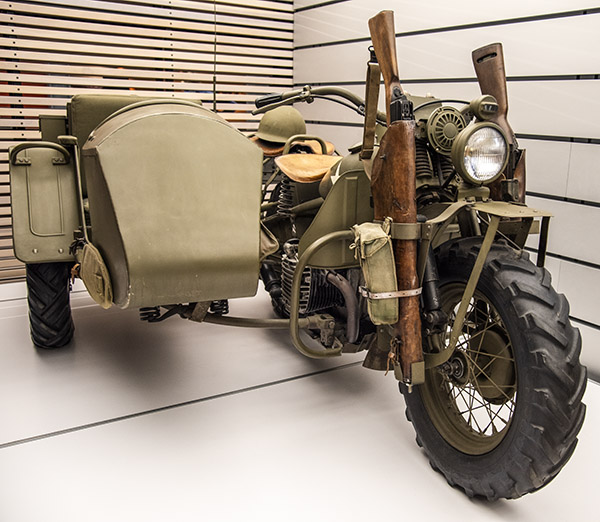
When the British captured BMW R 12 motorcycles in North Africa and provided a few to the United States, the German machines appeared to provide the answer to the U.S. Army’s major concerns with the WLA. The BMW had a relatively maintenance-free driveshaft to provide power to the rear wheel. The BMW’s horizontally-opposed twin cylinders were both out in the airstream, and as a result the BMW engine ran about a hundred degrees cooler than the Harley and Indian engines. The shaft drive did away with the chain and its wear and adjustment issues. The giant oil bath air cleaner was in a great location. And the BMW had a foot shifter and a hand clutch, a much easier to operate arrangement.
The Army asked both Harley-Davidson and Indian to develop prototypes based on the BMW R 12. Harley-Davidson’s answer was the XA, which looked, for all intents and purposes, as if the BMW engine and shaft drive had been grafted into a standard WLA. In reality, what had happened was very close to that. Harley reverse-engineered the BMW drive train and mated its version into the WLA chassis. The first few, including the prototype, even had the Harley springer front end.
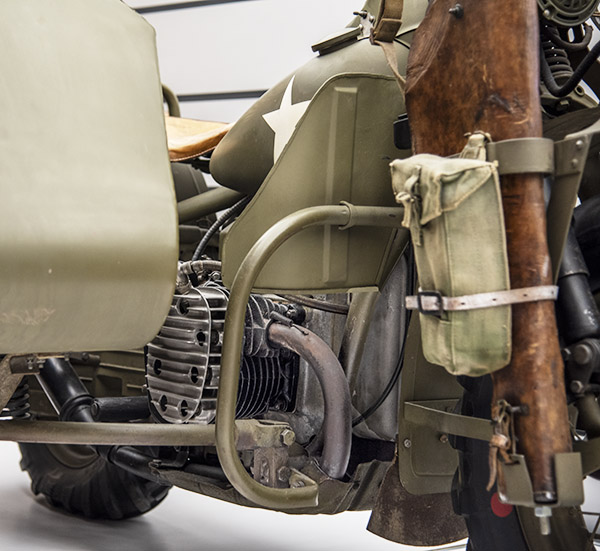

The Army was impressed with both the Harley and Indian BMW clones, and they gave both manufacturers production contracts. Harley and Indian each built 1,000 machines based on the BMW design. Harley’s XA was more of a direct copy; Indian’s design had the cylinders tilted up like a modern Moto Guzzi. But while the Harley and Indian development work was under way, the army had been experimenting with other transportation concepts and found that the 4WD Willys (the Jeep) was a much better all-around military vehicle. The Army shifted its resources to Jeep acquisition and did not take delivery on the motorcycles Harley and Indian had already produced. The Army can be fickle like that.
Both Harley and Indian did not pursue BMW clones, since neither company saw any significant civilian demand. Both manufacturers sold their machines to the public and walked away from further development. Today, both the Harley XA and its Indian counterpart are highly collectible.
The Real Knuckleheads?
On that topic of knuckleheads mentioned above…no, not the EL model mentioned several paragraphs up, but the guys running the show in the War Department and over at Indian. You see, the War Department’s spec for their desired military motorcycles called for a 30.5 cubic inch motorcycle (a 500cc twin). Indian snapped to and developed the Model 741 you see in the video below. Harley thought about things for a minute and told the Army they didn’t make a 500cc motorcycle, and they let the Army know they weren’t about to start. Harley further informed the, er, knuckleheads that they made a very good 45 cubic inch motorcycle, and if the Army wanted Harleys, that’s what they could buy.
The knuckleheads (the ones in uniform, not the EL motorcycles) quickly found out that Harley was right. The troops let the brass know that Harleys were better motorcycles, and that’s why the Army ordered many more Harley WLAs than Indians.
There’s one more area in which Harley had to set the knuckleheads straight. During the war, the Army told Harley and Indian to cancel all civilian motorcycle production and make only military motorcycles. Indian saluted and executed. Harley let the War Department know they could go pound sand. By keeping their civilian production going, Harley preserved their customer base. After the war, Harley prospered. Indian? Well, you know how that story ends.
I wrote a story for Motorcycle Classics magazine about the Indian 30-50 (Indian’s World War II workhorse) a few years ago. You can view it here. I also have a video of that bike you might enjoy:
Want to know more about Police and Military Motorcycles?
Never miss an ExNotes blog:


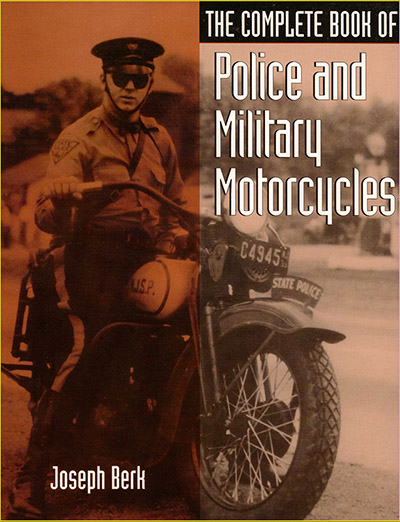

Great article as usual. I had a 1952 Duo Glide,the left side gas tank shifter was a bitch.
Thanks, John. I remember you describing that motorcycle. I’ll bet you sometimes wish you still had it.
I’m sure you are in the same boat, keep up the great work.
Very good story Joe, thanks!
Thank you, John, and thanks for commenting.
My father claimed after Japan surrendered due to the dropping of atomic bombs, the Japan invasion was canceled so the navy dumped vast amounts of equipment off ships like his landing craft , into the Philippine Sea.
Tanks, dozers , jeeps and Harley 45’s.
Packed in cosmoline those bike could be still in good condition .
lol. There is also rumors of a cave full of 45’s someplace on the P. Island.
With something like 10,000 islands who knows?
I heard those kinds of rumors as a kid. The most often heard one was about buying them for $25.
Yea
What was $25 in 1960 worth today?
Especially in say, silver dollars?
$25 in 1960 is worth $266.61 today. In silver dollars, you’d have to ask a numismatist…